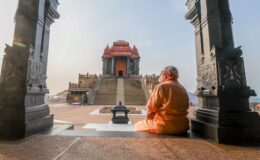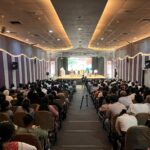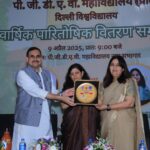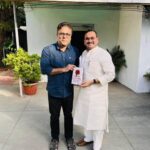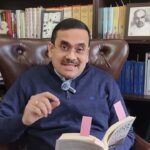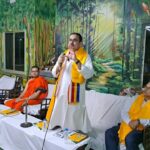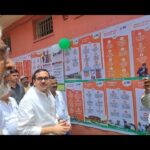Statue of Unity: Bhakti of a Thought
- By : Anirban Ganguly
- Category : Articles
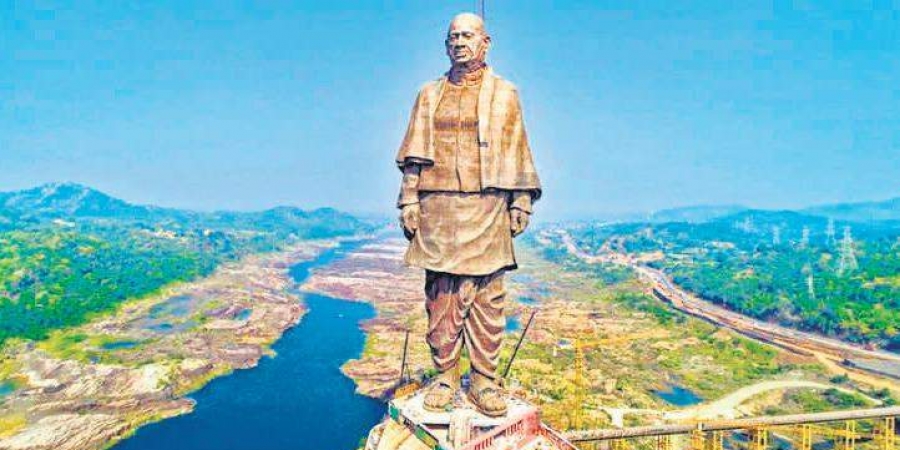
That the building of the Statue of Unity could be conceived and executed with steady determination and unfailing zeal is something that has unnerved the Congress party, especially its president, whose family has had a history of despising and trying to marginalise Sardar Patel’s legacy, especially his epochal contribution in reuniting modern India. This penchant for ignoring Sardar, this habit of overlooking his contribution is what has driven the Congress and its present dynast, Rahul Gandhi, to criticise the historic effort of erecting the Statue of Unity as a fitting and immortal tribute to Sardar’s contribution for our reunification. Some court historians have also chosen to criticise the effort, closet dynasts have picked fault saying that Sardar would not have approved of such a wasteful expenditure. All of a sudden, they have become mouthpieces of Sardar’s legacy – a legacy that they had till date either ignored or deliberately misinterpreted.
This habit of ignoring Sardar has a long history; in fact, in 1959, Rajendra Prasad had lamented that we had ‘almost completely forgotten Sardar Patel…That there is today an India to think and talk about is largely due to Sardar Patel’s statesmanship and firm administration…Yet we are apt to ignore him. No attempt has been made in Delhi to erect a memorial. Even the portrait in Parliament House is the gift of a ruling Prince (Gwalior). Let us not, therefore, run away with the thought that his services are any less valuable because we choose not to recognise them.” Read This – Fight against pharmaceuticals
Patel’s birth centenary fell in 1975, the year Emergency was declared and the government of the day, led by Rahul Gandhi’s grandmother, decided to ignore the date. Official India looked the other way, Patel’s legacy, his commitment to free India, his upholding of India’s democratic spirit, his faith in freedom was too difficult a legacy to be celebrated in the midst of Emergency, when the country had been converted into one big prison. By contrast, as one of Patel’s biographers has noted, “Falling in 1989, the centenary of Jawaharlal’s birth found expression on a thousand billboards, in commemorative TV serials, in festivals and on numerous other platforms.” This was but one expression of Sardar’s deliberate marginalisation by the Congress party’s first family and, therefore, it is highly ironic that Rahul Gandhi, while taking a cheap dig at the Statue of Unity, spoke of Patel being a “Congressman to the core”. After having neglected him for decades, the Congress dynasty has, all of a sudden, discovered Patel’s Congress core.
On Patel being a “Congressman to the core”, it may be said that Patel belonged to and guided that Congress which was the vehicle of our freedom movement. He belonged to that Congress which ceased to exist in 1969, when Rahul Gandhi’s grandmother split the party for personal positioning. Patel would also have been appalled and disgusted at the manner in which the current crop of Congress leaders invariably jump to defend break-India forces and all those who demand that India be fragmented. Rahul’s support to these disintegrationists would have undoubtedly disturbed Patel.
Patel, while being a “Congressman to the core” was also one who could, as V Shankar, Patel’s secretary during those crucial early years after independence noted, ‘in the wider interests of the country not only bend but also secure the co-operation of other elements in national life’. One example of this, pointed out Shankar, ‘was the manner in which he advised Pandit Nehru to form his government after Independence, which not only had a truly national character but in support of which he had no compunction in securing the services of life-long opponents of the Congress such as Dr B R Ambedkar and Shri Shyama Prasad Mookerji (sic)…I cannot think of any contemporary politicians of those days or those who have risen to prominence ever since who could make such deep impression even on those who were opposed to him.’
In fact, with Dr Syama Prasad Mookerjee, Patel had an excellent working relationship in the cabinet, with the former admiring the latter. In Patel, Dr Mookerjee saw the ‘strongest unifying force in our national life’, a leader in whom one found the rare combination of ‘realism and idealism’. Unfortunately, the Congress today, led by political pygmies who are allergic to Patel’s legacy, does not have the capacity or intellectual bandwidth to appreciate, leave alone replicate, these wider dimensions of Sardar’s personality in their politics.
While dedicating the Statue of Unity to the nation, Prime Minister Modi spoke of how had Patel not been there to steer the ship of the state post-Independence, one would need today a visa to visit the sacred Somnath Temple and the famed Charminar in Hyderabad. Modi’s succinct observations brought home the magnitude of the task that Patel achieved in such a short time.
We can take recourse to Babu Rajendra Prasad’s description of Patel’s gigantic task, when he wrote about how Sardar was above all a “practical politician and successful administrator” who “has left landmarks in our history which should not be forgotten…Just imagine the most difficult and delicate situation in which we were placed at the time of attaining Independence, with some 600 Indian States of all shapes and sizes and in different degrees of advancement and development, each free to join either India or Pakistan or to remain independent…Think what would have happened if the problems of Baroda and Jodhpur, Indore, Hyderabad had remained unresolved. And then you will understand the significance of the integration of all the states with India…”
The erection of the Statue of Unity thus is a reaffirmation of our unity, both physical and ideational and, more importantly, a reminder of the herculean effort that went into realising it. Modi also and rightly so, reminded us of the willing cooperation of most princes, who, because India had to be weaved into one mighty modern republic, gave up their privileges and contributed to the making of new India. The Nehruvian and Congress dynasty narrative has always taught us to look at the princes and their contribution with disdain, it has taught us to perceive them as usurpers who have had no contribution to the greatness of India and who have no place in the democratic framework of free India. Patel was the only one who could reach out to the princes, talk to them, negotiate, be firm, cajole and encourage them to be a part of the march of an independent and democratic India. In him, the princes too, found a real mentor, one to whom they could confide and rely on for guiding them towards respectable solutions.
Patel’s identification with India was complete, unconditional and undivided. His approach to a decision was driven by India’s national interest, as his daughter Manibehn Patel once noted, he ‘took many unpopular decisions in party and Government matters, but his decisions were accepted because he had no axe to grind. He was not amenable to threats or blackmail. He had no property of his own and he was above extraneous considerations. He had nothing to lose, he had no ambition and desire to cling to office’. Patel’s one constant and burning desire was to see India free, established and self-reliant in all her dimensions. ‘I only know’, he had once said towards the end of his life, ‘that I wish to remain a loyal soldier of India. May God end my life if I deviate a step from this loyalty’.
The Statue of Unity symbolises that spirit of loyalty, loyalty not for a family or a dynasty, but loyalty to India. It stands as a reminder of how India, through generations, needs to have loyal soldiers in the mould of Sardar Patel. As Narendra Modi had reminded us when laying the foundation for the Statue of Unity in 2013, ‘the Statue of Unity is not the Bhakti of a person but it is the Bhakti of a thought! Sardar Patel’s message of unity must keep echoing in every part of the country…’ Those who are opposed to such a unity, those who are opposed to all that Sardar Patel’s legacy symbolises are the ones who are criticising this great act of consecration and commemoration, but then theirs are voices in the wilderness today…



